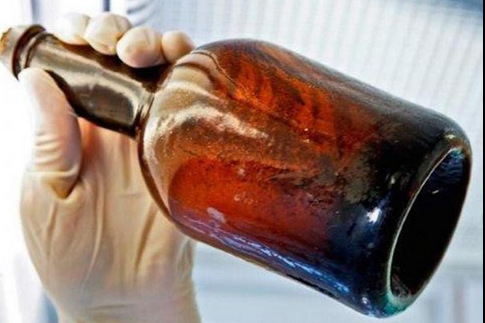People tend to be picky about their beer. Whether the taste is too watered down or it's skunked from fluctuations in temperature, l
et this be a reminder that all brews should be appreciated for what they are, as long as they satisfy the basic requirement of being drinkable.
A team of Finnish scientists recovered and recently analyzed beer from a shipwreck in the Baltic Sea, where several bottles rested untouched for 170 years,
LiveScience reports.
When divers brought the bottles up from the 1840s schooner wreck near Finland's Aland Islands, one of the bottles broke and began to foam. A few of the divers bravely decided to taste the beer and confirmed that, while gross, it did in fact taste like beer.
Researchers at the Technical Research Center of Finland later sought to determine the characteristics of the beer, so as to compare it to modern-day concoctions.
The researchers were hit with a ripe mixture of smells: yeast extract, dimethyl sulfide (think cabbage), Bakelite (a fishy smelling retro plastic), burnt rubber, over-ripe cheese, goat and sulfur.
Delicious, right? Significant seawater and bacterial activity had made its way into the bottles, but the profile nonetheless contained some of the yeast-derived flavor compounds present in beers we drink today.
According to the study results, published in Journal of Agricultural and Food Chemistry, the alcohol-by-volume level of the beers fell to between 2.8 and 3.2 percent. Since beer is not normally known to age very well, the original composition and taste were understandably compromised. Still, after all this time, credit the beers for being able to generate some buzz.
Read the full story
here.

 @archaeologymag/Twitter
@archaeologymag/Twitter